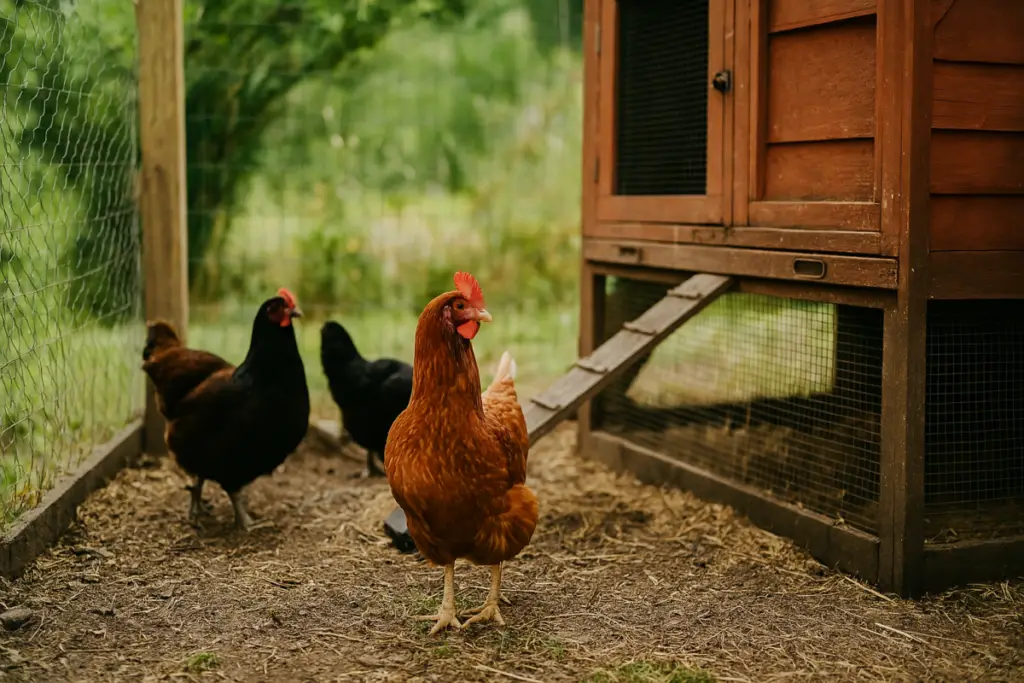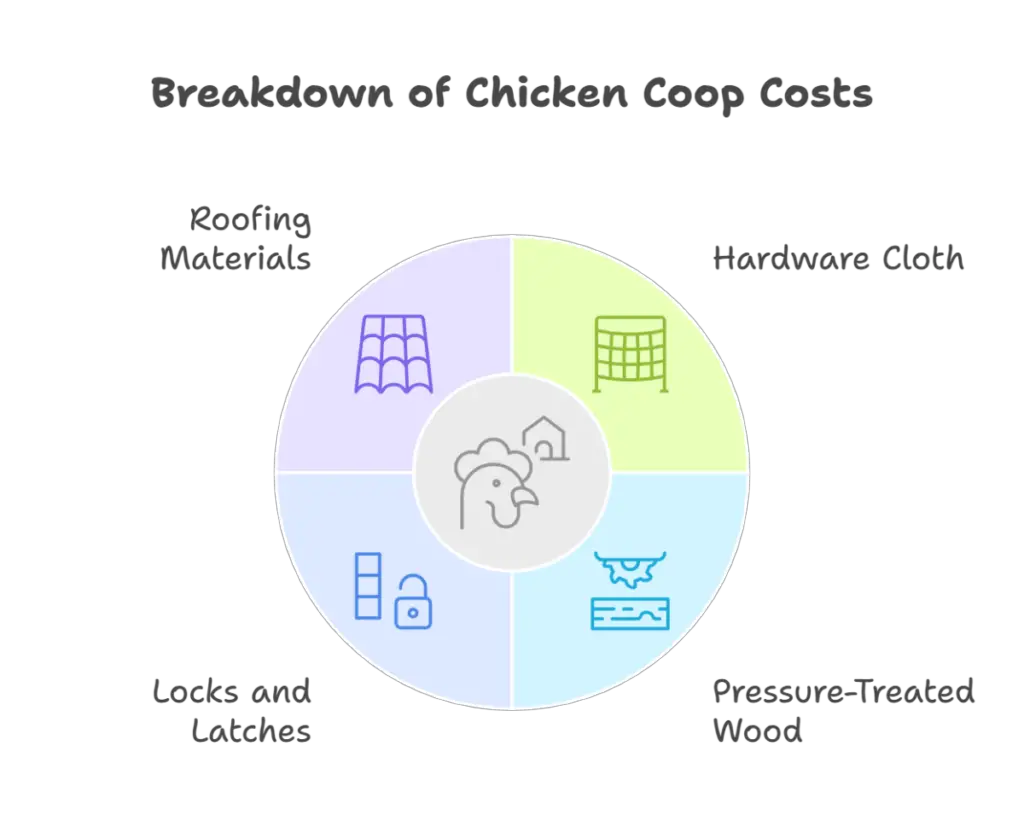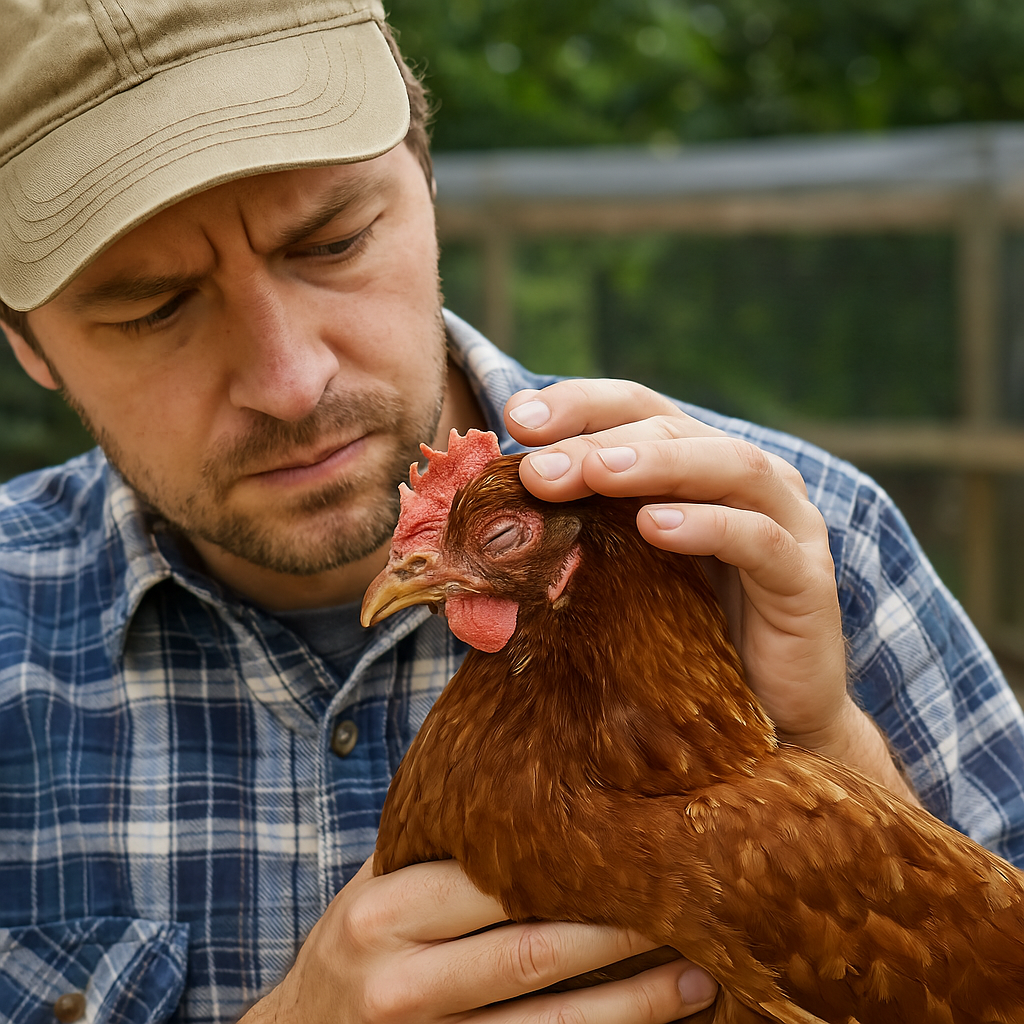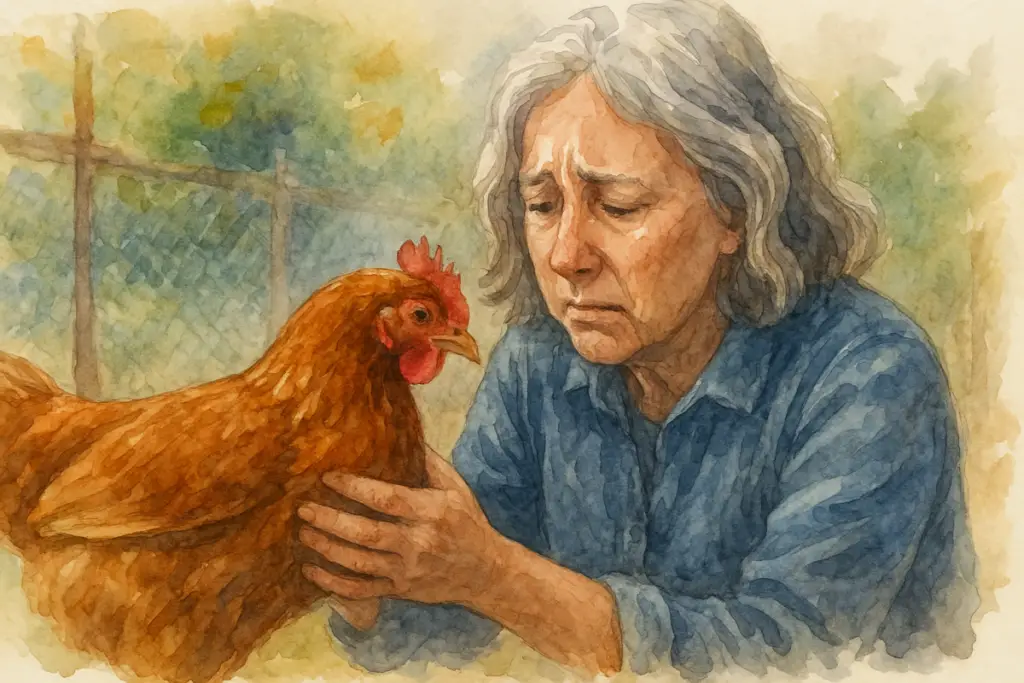
Introduction
Imagine this: You’re scrolling through your social feed, and there they are—those picture-perfect backyard chicken setups. Rustic coops painted in pastel hues, hens contentedly pecking at the ground, baskets brimming with eggs in every shade of brown and blue. The captions gush about farm-fresh breakfasts and the simple joys of raising your own flock. It’s no wonder the idea seems irresistible. Who wouldn’t want to wake up to the sound of happy clucking and gather eggs straight from the coop?
But here’s the thing: Reality has a way of pecking holes in that romantic notion.
Raising backyard chickens is not just about charming aesthetics and fresh eggs. It’s about the daily grind, unexpected costs, predatory threats, and those emotional moments no one really talks about. Sure, chicken keeping has its rewards, but it also comes with its fair share of frustrations—frustrations that often catch new owners off guard.
Before you decide to embrace the backyard chicken lifestyle, it’s crucial to understand the full picture—not just the Instagram version. Because once those hens are in your yard, it’s not just cute photo ops; it’s real responsibility. This guide will take you beyond the picture-perfect coop setups and into the gritty realities of backyard chicken keeping. We’ll explore the pitfalls that seasoned chicken keepers know all too well—lessons learned through experience and, sometimes, a bit of heartbreak.
By the end, you’ll have a clear, honest view of what it truly takes to raise backyard chickens. And with that knowledge, you can make a more informed decision about whether you’re ready to take the leap—or if it’s better to keep admiring from afar.
The Romanticized Image vs. Reality
Social Media vs. Real Life
It’s hard not to get swept up in the idea of raising backyard chickens when your feed is flooded with cozy coop tours and rustic egg baskets. The narrative is simple: chickens are low-maintenance, charming, and effortlessly productive. It’s the bucolic dream wrapped in a few clicks and perfectly filtered snapshots.
Yet, this picture-perfect portrayal often sets aspiring chicken keepers up for a rude awakening. The reality is that chickens are messy, loud, and sometimes downright stubborn. They dig up flower beds, scatter feathers, and can turn a patch of lush grass into a bare dirt bath faster than you’d think. And when it rains? Mud, manure, and a not-so-pleasant odor can linger far longer than that Instagram reel suggests.
Many new chicken owners admit they felt misled by the online stories and stunning photos. They expected quaint egg collecting and soothing clucks. Instead, they got early morning feedings, relentless coop cleaning, and the occasional hen that just refuses to lay an egg for weeks. While social media shows the highlights, real-life chicken keeping demands consistency, effort, and a willingness to get your hands dirty—literally.
Why New Chicken Owners Often Feel Overwhelmed
Once reality sets in, the enthusiasm for backyard chickens can wane quickly. It’s not uncommon to hear stories of first-time keepers feeling utterly overwhelmed after just a few weeks. The daily chores pile up—feeding, cleaning, securing the coop at night, checking for eggs, treating illnesses—and it becomes clear that chickens require more than a picturesque setup.
What often exacerbates the overwhelm is the unexpected commitment. Chickens don’t take holidays. They don’t care if you’re sick or have a busy week. Rain or shine, snow or heat, they expect you to show up. It’s a lifestyle shift that catches many people off guard.
One new keeper shared their surprise when, after building a beautiful coop and bringing home a small flock, they realized just how quickly the novelty wore off. “I thought I was ready, but I didn’t think about how much maintenance it would actually take,” they admitted. “It’s not just about fresh eggs—it’s a constant routine.”
The reality of backyard chickens is far from effortless, and understanding that from the outset can help potential keepers make a more grounded, realistic decision.
Pitfall #1: Unexpected Costs

Initial Setup Expenses
One of the most overlooked aspects of backyard chicken keeping is the initial cost. While it may seem like a budget-friendly hobby at first, the expenses can quickly add up. It’s not just about buying a few chicks and setting up a coop. You’ll need materials for a sturdy, predator-proof structure, including:
- Hardware cloth (not chicken wire)
- Pressure-treated wood
- Locks and latches
- Roofing materials
Coops themselves can vary wildly in price. A pre-made coop from a store can cost anywhere from $200 to over $1,000, depending on size and quality. Opting for a DIY build might save money, but only if you already have the necessary tools and some building experience. Many first-timers find themselves making multiple trips to the hardware store, buying everything from screws to paint, and watching their budget spiral.
Ongoing Costs
The financial commitment doesn’t end once the coop is built. Chickens eat—a lot. Depending on the size of your flock, you could be looking at $20 to $50 per month on feed alone. Additionally, you’ll need:
- Bedding (like straw or wood shavings)
- Grit and oyster shells (for calcium)
- Cleaning supplies
Veterinary care is another often overlooked expense. While chickens are generally hardy, they do get sick, and finding a vet that treats poultry can be challenging and expensive. Whether it’s medication for parasites, vaccinations, or emergency care, medical expenses can catch you off guard.
Case Study: The DIY Coop That Wasn’t So Cheap
One backyard chicken enthusiast, Sarah, was determined to build her own coop after seeing countless tutorials online. Armed with a basic plan and a budget of $200, she confidently purchased the essentials: wood, chicken wire, and a few hardware items. But as construction began, Sarah quickly realized that the standard chicken wire she bought wasn’t predator-proof, forcing her to upgrade to hardware cloth—adding another $60 to her expenses.
As she framed the coop, unexpected challenges arose:
- The ground wasn’t level, requiring additional gravel to stabilize the foundation—another $30.
- Rain in the forecast pushed her to buy a waterproof roof tarp, adding $20 more.
- Hinges that seemed sturdy enough gave out during a test run, leading to another trip to the store for heavy-duty replacements.
By the time the coop was completed, Sarah had spent closer to $800, not including the labor hours invested. Reflecting on the process, she admitted, “I thought building my own coop would save money, but I didn’t factor in the cost of mistakes or upgrades. If I had to do it again, I’d budget double what I think I need.”
The takeaway? Always account for potential setbacks and extra materials. DIY projects often take longer and cost more than expected, especially when building something meant to protect your flock from the elements and predators.
Pitfall #2: Predator Problems
Common Predators in Urban and Suburban Areas
Predators are one of the most persistent threats to backyard chickens, and they’re not just a rural problem. Even in urban and suburban areas, chickens face danger from raccoons, foxes, neighborhood dogs, and aerial predators like hawks and owls. The moment predators discover a coop, they become relentless, testing every weak point night after night.
- Raccoons: Notorious for their dexterity, capable of unlatching simple coop locks.
- Foxes: Cunning and often dig under fencing to reach the flock.
- Hawks and Owls: Swoop down during daylight, snatching hens from open areas.
- Neighborhood Dogs: Often break into coops out of excitement rather than hunger.
How to Build a Predator-Proof Coop
Building a predator-proof coop requires strategic planning and investment. Start by using hardware cloth instead of standard chicken wire; it’s far more resilient to gnawing and clawing. Secure the coop with heavy-duty latches, ideally with carabiner clips, to outsmart raccoons.
For added protection:
- Bury hardware cloth at least 12 inches into the ground to prevent digging.
- Elevate the coop to deter burrowing animals.
- Cover the run with netting or wire mesh to protect from aerial attacks.
Regular maintenance is key: check for signs of digging, loose boards, or bent wire. One small gap can lead to a tragic loss overnight. Investing in motion-activated lights and cameras can also serve as a deterrent and a way to monitor potential threats.
The reality is that predators are persistent, and protecting your flock requires constant vigilance and thoughtful coop design.
Pitfall #3: Noise Complaints and Legal Issues
Understanding Local Regulations
One of the most unexpected challenges backyard chicken keepers face is navigating local regulations and ordinances. It’s not just about getting the chickens—it’s about making sure your neighborhood or city allows them in the first place. Many municipalities have strict rules about how many chickens you can keep, whether roosters are allowed, and even how far your coop must be from property lines.
- City Ordinances: Check your city’s municipal code for specific regulations on backyard poultry.
- HOA Rules: Some homeowner associations prohibit chickens altogether or restrict the number and type.
- Zoning Laws: Urban areas may have different restrictions compared to rural zones.
Ignoring these regulations can lead to fines, legal battles, or being forced to give up your flock. Always research thoroughly before bringing chickens home. A quick call to your local zoning office can save a lot of hassle later on.
Managing Noise from Roosters and Hens
Another common complaint from neighbors—and sometimes even from your own family—is the noise. While most people expect roosters to be loud, they’re often surprised to find that hens can be quite vocal too. Hens may cackle loudly after laying an egg or when they feel threatened.
- Roosters: Their crowing can start as early as 4 a.m. and continue throughout the day. If you live in a suburban area, having a rooster may be more trouble than it’s worth.
- Hens: Though quieter than roosters, they still make noise, especially when laying eggs or feeling stressed.
Solutions to Noise Problems:
- Skip the Rooster: Hens lay eggs without one, so consider an all-hen flock if noise is a concern.
- Soundproofing the Coop: Adding insulation or planting shrubs around the coop can help muffle the sound.
- Breeds Matter: Some chicken breeds are known to be quieter, like Cochins or Brahmas.
One chicken keeper shared her experience of choosing a mixed flock without roosters after neighbors complained. “Even with just hens, I had to add extra coop insulation because one of them loved to announce every egg with a full-blown song,” she said. “You never really know how loud they’ll be until they’re in your backyard.”
The bottom line? Noise can be a major issue, and not everyone will appreciate your backyard flock. Take proactive steps to minimize sound, and communicate with neighbors before committing to chickens.
Pitfall #4: Dealing with Illness and Biosecurity

Common Chicken Ailments
Backyard chickens are susceptible to a range of health issues that can catch new owners off guard. From respiratory infections to parasites, even a well-cared-for flock can face unexpected health challenges. Some of the most common ailments include:
- Respiratory Infections: Symptoms include sneezing, coughing, nasal discharge, and labored breathing. Often caused by bacterial or viral infections, these illnesses can spread rapidly through the flock.
- Parasites: External parasites like mites and lice, as well as internal ones like worms, can severely impact a chicken’s health and productivity.
- Egg Binding: A condition where an egg gets stuck inside the hen, leading to discomfort, lethargy, and sometimes death if not treated promptly.
- Bumblefoot: A bacterial infection on the foot that can cause swelling and pain.
Preventive Measures
Taking proactive steps can significantly reduce the risk of disease and ensure your flock stays healthy. Consider these key practices:
- Quarantine New Birds: Always isolate new chickens for at least 30 days before introducing them to the existing flock. This practice helps prevent the spread of disease.
- Regular Health Checks: Monitor your chickens frequently for signs of illness. Look for changes in behavior, feather quality, or egg production.
- Sanitation Practices: Clean the coop regularly to reduce the build-up of droppings and pathogens. Disinfect feeders, waterers, and perches to minimize bacterial growth.
- Vaccinations: Some diseases, like Marek’s disease, can be prevented through vaccination. Consult with a poultry vet to determine the best vaccination plan for your area.
Real-Life Insight: A Lesson in Biosecurity
One experienced chicken keeper shared a cautionary tale about introducing a new hen without quarantine. Within days, the entire flock showed symptoms of respiratory illness. What began as a mild cough in one bird turned into a flock-wide outbreak, resulting in several lost hens and a costly vet bill. “I thought she looked healthy enough when I brought her home,” they admitted. “Now I know better—quarantine isn’t optional.”
Why Biosecurity Matters
Biosecurity is more than just keeping your chickens healthy—it’s about protecting your investment and preventing the heartache of losing your flock. An outbreak can spread rapidly, and once symptoms appear, treatment may come too late. Being proactive can make the difference between a thriving flock and one struggling to survive.
The takeaway? Prevention is always easier and cheaper than treatment. Invest time in proper quarantine and routine checks to safeguard your flock’s health.
Pitfall #5: Egg Production Isn’t Consistent
Factors Affecting Egg Laying
One of the most common surprises for new chicken owners is the inconsistency in egg production. While it’s easy to imagine a steady supply of fresh eggs every morning, the reality is far from predictable. Several factors can affect how frequently your hens lay, including:
- Seasonal Changes: As daylight hours decrease in winter, egg production naturally drops. Hens need about 14 to 16 hours of light to maintain peak laying.
- Age of the Hens: Most breeds lay prolifically during their first two years, then production gradually declines.
- Diet and Nutrition: Poor nutrition can lead to reduced laying or even complete cessation. A lack of protein or calcium can impact egg quality and quantity.
- Stress Factors: Predators, moving the coop, or introducing new birds can stress hens, leading to a temporary drop in egg production.
What to Do When Production Drops
If your hens suddenly stop laying, it’s essential to identify the cause before taking action. Start by checking the basics:
- Inspect Their Diet: Make sure they are getting a balanced layer feed rich in calcium and protein.
- Evaluate Coop Conditions: Is the coop clean, well-ventilated, and secure from predators?
- Check for Molting: Hens often stop laying during a molt as they divert energy to feather regrowth.
- Monitor for Health Issues: Parasites or illnesses can affect productivity.
Practical Tip: Some owners use supplemental lighting in winter to extend daylight hours, but this can strain the birds if not managed carefully. Always prioritize your hens’ well-being over maximizing egg output.
Pitfall #6: Managing Chicken Waste and Odor
The Reality of Chicken Poop
One aspect of backyard chicken keeping that’s rarely highlighted on social media is the sheer volume of waste your flock will produce. Chickens poop a lot—often every 15 to 20 minutes. If left unmanaged, this can lead to strong odors, fly infestations, and unsanitary conditions.
DIY Odor Control Hacks
Keeping your coop smelling fresh requires consistent upkeep and a few strategic practices:
- Deep Litter Method: Layer bedding like straw or wood shavings on the coop floor, turning it regularly to promote composting. This method naturally breaks down waste while controlling odor.
- Proper Ventilation: Ensure your coop has adequate airflow to reduce humidity and ammonia buildup.
- Use Natural Deodorizers: Sprinkle diatomaceous earth or agricultural lime in bedding to neutralize smells.
- Regular Cleaning: Establish a routine for scooping poop and refreshing bedding. A little effort daily is far easier than a massive clean-up later.
Real-Life Experience: The Smelly Surprise
One chicken owner shared how their first summer with chickens was far from idyllic: “The coop started to smell like a barnyard within a week, and neighbors began to notice. I realized that daily cleaning wasn’t just a good idea—it was essential.”
The lesson here? Odor management is non-negotiable. A clean coop not only keeps your chickens healthy but also maintains good relations with your neighbors.
Pitfall #7: Emotional Challenges and Ethical Dilemmas

What to Do When Chickens Stop Laying
One of the toughest aspects of keeping backyard chickens is making decisions when your hens are no longer productive. Most chickens naturally slow down egg production after their second year, and by year three or four, some may stop laying altogether. This reality brings up an emotional dilemma: Do you keep them as pets, or do you make the difficult choice to cull?
For some backyard chicken keepers, the idea of culling a beloved hen is unthinkable. They choose to let their non-laying hens live out their natural lives, enjoying a retirement of foraging and scratching. However, this decision comes with its own challenges: continuing to feed and care for chickens that are no longer contributing to egg production.
On the other hand, some owners choose to cull their non-productive birds, viewing it as a practical decision to keep the flock efficient. This choice can feel especially tough if you’ve grown attached to your hens. It’s essential to consider your stance on this issue before you start raising chickens.
Dealing with Injuries or Death
Another aspect that many first-time chicken keepers aren’t prepared for is dealing with injured or deceased birds. Whether it’s a predator attack or a sudden illness, losing a chicken can be heartbreaking. Some keepers choose to have a plan in place for humane euthanasia if a bird is suffering.
- Emergency Supplies: Keep a chicken first-aid kit on hand, including wound spray, bandages, and antibiotics.
- Humane Euthanasia: Research humane methods ahead of time or locate a vet who can help if the need arises.
- Emotional Preparedness: Acknowledge that losses are part of chicken keeping. It’s natural to feel grief when a bird you’ve cared for passes away.
Real-Life Reflection: An Unexpected Loss
One backyard chicken owner shared a story of losing a hen to a hawk attack: “I never thought I’d have to deal with something like that. It’s not just about losing an animal—it’s losing a pet.” The experience was a painful reminder that chicken keeping comes with emotional challenges, especially when unexpected loss strikes.
The Takeaway: Consider your plan for when hens stop laying and how you’ll handle injuries or deaths in your flock. Preparing for these realities ahead of time can help you navigate the more challenging aspects of chicken keeping.
Real-Life Experiences: What Seasoned Chicken Keepers Wish They Knew
Insights from Experienced Backyard Farmers
Talking to seasoned chicken keepers reveals a consistent theme: It’s not as easy as it looks. While the rewards can be fulfilling, the reality of maintaining a healthy and happy flock requires effort, consistency, and sometimes a bit of heartache. Here are some key insights they shared:
- Budget for More Than You Think: Many experienced keepers stress that initial costs are often underestimated. Between building a sturdy coop and maintaining the flock’s health, costs can escalate quickly.
- Prepare for Emotional Moments: Whether it’s losing a favorite hen or making the tough call to cull a bird, experienced chicken owners emphasize the importance of emotional preparedness.
- Community Matters: Connecting with other local chicken keepers can provide support and advice. It’s invaluable when dealing with unexpected health issues or predator attacks.
- Plan for Predators: No matter how secure your coop seems, seasoned keepers recommend regular checks and upgrades to predator-proofing. Many learned the hard way after losing birds to raccoons or hawks.
Words of Wisdom
One long-time chicken owner shared, “My biggest mistake was thinking that chickens are low-maintenance. They’re not pets in the traditional sense—they’re livestock that need daily attention. If you’re not ready to commit, it’s better to admire chickens from afar.”
Another backyard farmer, reflecting on years of keeping chickens, offered this advice: “Learn to balance the romantic image with reality. Chickens can be endearing and fun, but they’re also demanding. If you’re prepared for the lows as well as the highs, you’ll enjoy it much more.”
Takeaway
The most successful backyard chicken keepers are those who go in with realistic expectations. They understand that while the idea of fresh eggs and happy hens is appealing, the responsibility is real. Whether it’s dealing with costs, managing noise, or facing emotional challenges, seasoned keepers know that the key is to plan, prepare, and persevere
Final Thoughts: Is Raising Chickens Really Worth It?
After exploring the lesser-known challenges of backyard chicken keeping, you might be wondering: Is it really worth it? The answer largely depends on your expectations, commitment level, and willingness to embrace the realities that go beyond the Instagram-perfect coop.
Raising chickens can be deeply rewarding—fresh eggs, quirky personalities, and the satisfaction of sustainable living. However, it also demands consistent effort, financial investment, and a readiness to face the ups and downs that come with animal husbandry.
The most successful chicken keepers are those who go in with eyes wide open. They’ve done their research, prepared for unexpected costs, secured their coops against predators, and accepted the emotional realities that come with keeping livestock. They also understand that while chickens can feel like part of the family, they are still animals with specific needs and vulnerabilities.
If you’re drawn to the idea of backyard chickens, take the time to weigh the pros and cons honestly. Be prepared for the commitment it takes to keep them happy and healthy. When you’re realistic from the start, the joys of chicken keeping will far outweigh the challenges.
Frequently Asked Questions (FAQ)
1. How much does it really cost to start raising backyard chickens?
Starting costs can vary widely, but most new chicken keepers spend between $500 and $1,500 on initial setup. This includes purchasing chicks, building a coop, predator-proofing, and buying feeders, bedding, and other essentials. Ongoing monthly costs for feed, bedding, and healthcare can range from $20 to $50 per month per flock.
2. How do I keep my chickens safe from predators?
To protect your flock, build a predator-proof coop using hardware cloth instead of chicken wire, bury the fencing at least 12 inches underground, and use heavy-duty latches on doors. Covering the run with netting or wire mesh helps deter aerial predators. Regularly inspect the coop for signs of digging or damage.
3. What should I do if my chickens stop laying eggs?
Check for common causes like stress, poor nutrition, molting, or shorter daylight hours. Ensure your hens have a balanced diet rich in protein and calcium, and consider providing supplemental light in winter. If the problem persists, assess the flock for health issues or parasites.
4. Are chickens loud, and will my neighbors complain?
Chickens can be surprisingly noisy, especially roosters. Even hens can be loud when laying eggs or feeling threatened. To reduce noise, consider keeping only hens and choosing quieter breeds like Cochins or Brahmas. Soundproofing the coop and maintaining open communication with neighbors can also help.
5. What happens when my hens stop laying? Do I keep them as pets?
Deciding whether to keep non-laying hens as pets or cull them is a personal choice. Some owners keep older hens as part of the flock, while others choose to humanely cull to maintain a productive flock. Plan ahead for how you’ll handle this situation, as it’s an inevitable part of chicken keeping.

